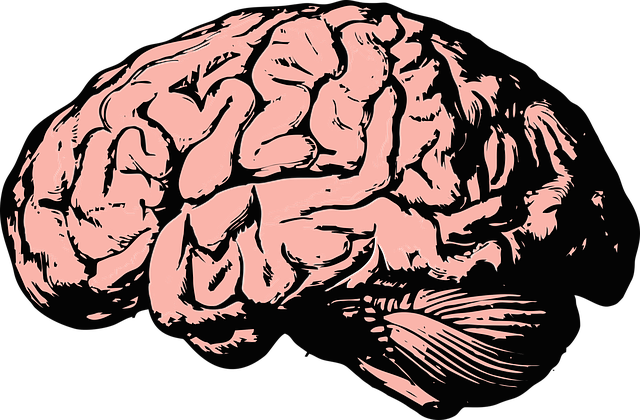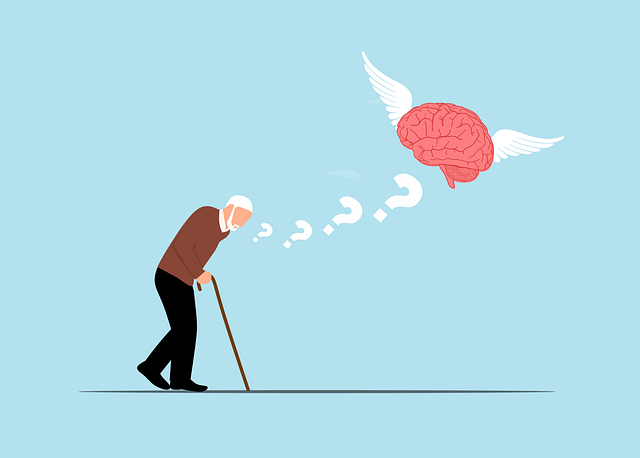A psychotherapy technique known as cognitive restructuring (CR) teaches patients to recognize and challenge illogical or maladaptive beliefs, or cognitive distortions. Examples of these include splitting, overgeneralization, magical thinking, emotional reasoning, overgeneralization, and magnification.[2] CR is used in many different types of therapies, including as cognitive behavioral therapy (CBT) and rational emotive behavior therapy (REBT). It uses a variety of tactics, including guided imagery, Socratic questioning, and thought recording. Numerous studies show that CR-based medicines are quite effective.
What is cognitive deletion?
A therapeutic method known as cognitive restructuring, sometimes known as cognitive reframing, assists the client in identifying, questioning, and changing or substituting their negative, illogical thoughts (also known as cognitive distortions; Clark, 2013).

It is a mainstay of cognitive behavioral therapy and a commonly employed technique in a therapist’s toolkit since erroneous beliefs about the self and the outside environment contribute to a great deal of our difficulties. By fostering more constructive and useful thought patterns, cognitive restructuring seeks to assist individuals in lowering their levels of stress (Mills, Reiss, & Dombeck, 2008).
Though it could seem extremely tough, changing your own thought patterns is essentially similar to learning any other skill: it is challenging at first, but with practice, you will find it easier and easier to challenge yourself.
example
For instance, emotional reasoning might inform someone experiencing concern over a break-in at their house that this is because a break-in is probably going to occur. Their terror is heightened by this. People who engage in cognitive restructuring are encouraged to pause and consider the supporting evidence for their beliefs.
Example: One of the assignments was difficult for the student to complete. He experiences psychological distress as a result and believes he will fail every project. This is erroneous reasoning since he might perform better in the future to save himself from the same humiliation.
How cognitive restructuring works
Cognitive restructuring is based on the theory that you may affect your emotions and behaviors by altering your automatic thought patterns.
Although it is advised by experts that you employ cognitive restructuring in conjunction with a cognitive behavioral therapist, you can apply the technique on your own to reframe less serious, everyday negative beliefs. Cognitive restructuring can be used, for instance, to psychologically get ready for a party or a public presentation.
Cognitive restructuring is not a method; it is a process. It uses a variety of techniques, including decatastrophizing, arguing, thought recording, and guided questioning, to replace these cognitive distortions with more logical and uplifting ideas in an effort to lessen anxiety.
Recognize Automatic Thoughts
The first step is to write down your negative thoughts and the circumstances that led to them in a notebook. Check to see if any trends emerge.
It’s possible that you feel comfortable around familiar coworkers at work but become nervous in unfamiliar social situations, such as parties. Perhaps you’re afraid of public speaking, but not of socializing with strangers.
Recognize Cognitive Distortions
The next stage is to determine which portions of your thoughts you might be misinterpreting or distorting after going over your written notes.

Thinking primarily in absolutes or adopting a black-and-white perspective are common distortions encountered by people with SAD. Saying, for example, “I never know what to say at social functions.”
Additional typical cognitive distortions consist of:
- Oversimplification
- Leaping to judgments (including fortune-telling and mind-reading)
- Eliminating the positive
- Magnification, reduction, or catastrophizing
- Individualization
- Sorting
- Reasoning based on emotions
- Must declarations
- Labeling
Contest the Ideas

The next stage is to ascertain the veracity of your beliefs and the supporting data. Posing these queries to oneself can be beneficial:
- Do I have a correct understanding of this situation?
- Are my opinions based on feelings or on facts?
- What concrete proof is there for my opinion?
- Might I be reading the evidence incorrectly?
- Do I think I can handle this circumstance better than I actually am?
- What could possibly go wrong if my assessment of the circumstances is accurate?
- What steps can I take to change the course of events?
- Is this a case of black and white thinking when there is more to it than meets the eye?
You might be able to think of a few instances in your social or professional life where you excelled if you have a tendency to think in black and white. After that, you might say, “I get tongue-tied in social situations sometimes, but not all the time.”
Change Your Thoughts
The last stage is to substitute truthful, affirming statements for each of your initial negative thoughts. “I never know what to say at social functions” might be substituted in this instance with “Sometimes I surprise myself and I know what to say
Develop the ability to recognize cognitive distortions when they occur.
For instance, you are aware of your propensity for “negative predictions.”
Just keep track of any instances in which you find yourself projecting the worst for a week. You may observe, for instance, that you’re anticipating to be disappointed by a party, that you’ll be too exhausted to work out, that your supervisor won’t approve of an idea, etc.
Consider your options for thinking when you notice yourself engaging in the cognitive distortion.
Regarding the example of the negative predictions, you can wonder what other alternative outcomes there are. Try asking these three inquiries: What can go wrong that could be the worst? The most favorable outcome that may occur? Which is the most practical?
2. Monitor the precision of an idea.
For instance, the notion “If I think about my problem a lot, it’ll help me find a solution” is an example of rumination.

In one column, you may record each instance of overthinking or ruminating that you catch yourself doing for this example. In another column, you could record whether or not the rumination helped you solve an issue.
By the conclusion of the week, figure out what proportion of your ruminations resulted in practical problem-solving.
Every time you notice it, another excellent idea is to note down how long you were ruminating—roughly in minutes. After that, you may calculate the number of minutes you spent pondering on each effective solution thought.
3. Examining your thoughts through behavior.
For instance, you might be thinking, “I don’t have time to take breaks.”
You might carry on as usual for a week (Weeks 1–3) and then, at the conclusion of each day, grade your productivity on a 0–10 scale.
You could complete the same ratings in week two, pausing for five minutes every sixty minutes.
Next, you would evaluate your two weeks’ worth of productivity.
4. Consider the evidence supporting and refuting your claim.
For instance, you might be thinking, “I can never do anything right.”
Column A presents objective evidence supporting the notion that you are incapable of doing anything correctly, and Column B presents objective evidence refuting your claim.
The advantages of cognitive restructuring
Cognitive restructuring has been linked to improved mental health, according to several research.
A meta-analysis published in 2021 evaluated the efficacy of behavioral activation, cognitive restructuring, and CBT for adult depression. The information was derived from 45 investigations with 3,382 subjects.
All three treatments produced better results as compared to standard care. The three therapies did not, however, significantly differ in terms of improvements. This implies that while cognitive restructuring is successful, its efficacy is comparable to that of behavioral activation and cognitive restructuring.

In a 2018 study, individuals with a tendency of excessive self-criticism received cognitive restructuring, also known as cognitive defusion therapy, through an app. Both therapies lessened anxiety and self-criticism while also lowering negative attitudes and thoughts.
However, there was a more steady pattern of progress in cognitive defusion. This implies that while cognitive restructuring may be helpful, it may not be the most reliable approach all the time.
Anywhere can be used for cognitive restructuring, either alone or with the assistance of an app or therapist. This may make it a desirable choice for those who would prefer not to see a therapist or are unable to do so.
Drawbacks and objections to cognitive restructuring
When someone applies cognitive restructuring to refute views that lack evidence or are based on false premises, it functions most effectively. Consequently, this method has certain drawbacks, including:
Right ideas.
An individual’s evaluation of a circumstance or action might occasionally be correct. There can be a lot on the line, or someone might have done something they deeply regret. A person engaging in self-directed cognitive restructuring may not know how to use it in these situations.
Trauma.
Traumatic events alter the functioning of the brain and nervous system and can leave behind ingrained, difficult-to-shake attitudes and perspectives on life. Even though a person with posttraumatic stress disorder (PTSD) is aware that a past experience is unlikely to recur, symptoms may still be present.

Self-knowledge.
Cognitive restructuring in all its forms, including CBT, requires a certain degree of self-awareness. In daily life, a person needs to be able to pay attention to and examine their own thoughts. Some people find this challenging. Individuals who just engage in cognitive restructuring may find it difficult to recognize their own prejudices.
Implicate.
Cognitive restructuring has been interpreted by some as an approach that holds that all unpleasant emotions are the result of false beliefs, and that any grief, fear, or rage someone has must be their own fault.
When to Get Assistance
Selecting a therapist skilled in cognitive restructuring might help an individual receive assistance.
This is something that everyone can accomplish, regardless of whether they exhibit signs of a mental illness. But one would wish to think about getting expert assistance if:
- They struggle with severe emotional anguish;
- their thoughts and feelings interfere with their capacity to function
- they abuse substances;



